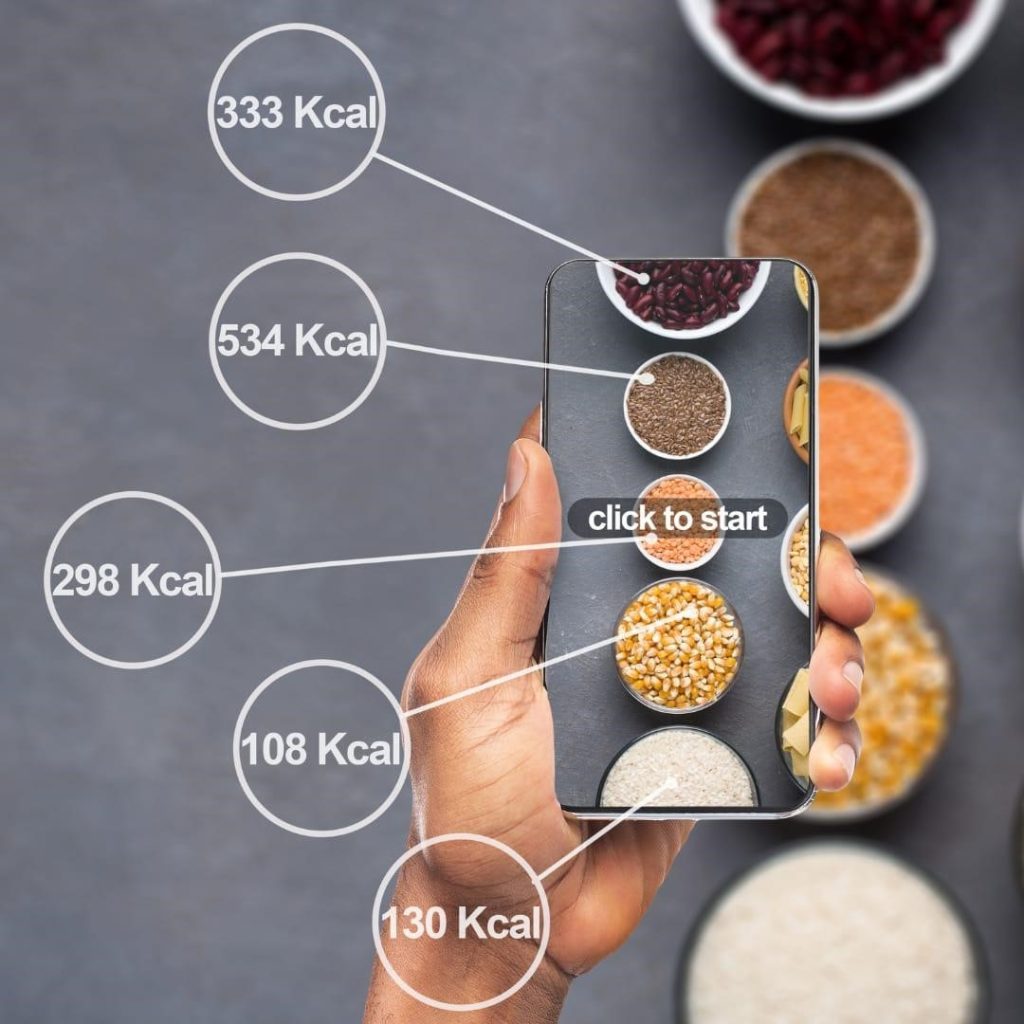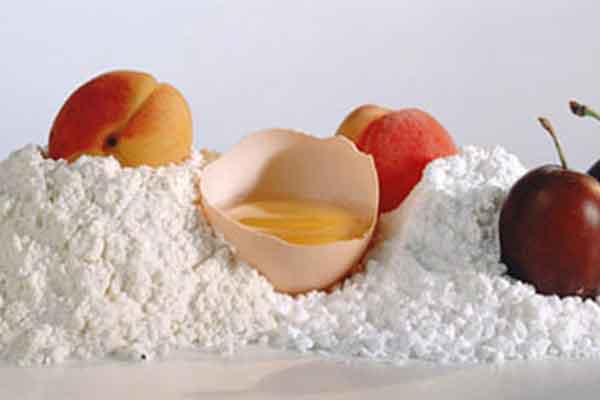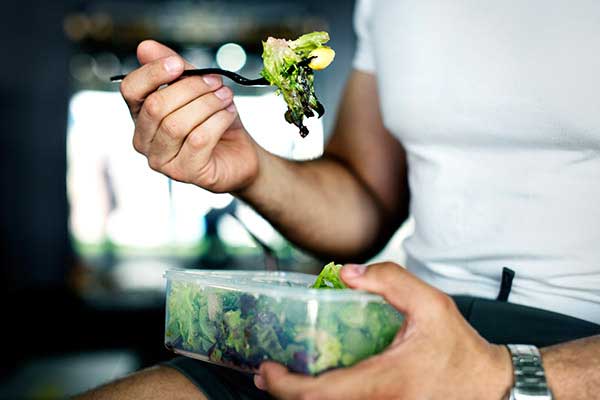Calorie Counter: A Guide To Maintain Your Calories

Do you know what exactly calories are? It is a unit of measurement of how much food we consume and burn per day. But the question is, do we need to track our calorie counters every day? In this guide, we will spill the tea about everything. After all, this is important for your body’s health. Let’s enter the gateway of knowledge and insights about food and nutrition.
Food Calorie Counter: A Simple Definition
You just ate food, Gained nutrition, and Felt Energy, but you felt hungry again after a while. Where’s your energy going? Energy is what Calories are. Now, food calorie countermeasures or keep track of your calorie intake. This is a very general explanation. So, let’s gain knowledge through an Indian lifestyle lens in the next section.
How Is The Indian Food Calorie Counter Different?
The Indian food calorie counter sets itself apart from the general calorie counters in a very unique way. Different states have different types of food based on their climate, culture, taste, crops, spices, and geographical location.
In addition, the Indian food calorie counter considers individuals’ typical daily calorie consumption in India. The recognition is given to the fact that the caloric requirements of individuals can differ depending on various factors, including age, gender, level of physical activity, and overall well-being.
Indians primarily eat carb-rich meals which consist of rice, or wheat as the base.
So, let’s start an adventure of a healthy lifestyle with the simple steps you will know about in the next section.
7 Easy Ways to Monitor Your Calorie Counter: Your Fitness Objectives!
Step 1: Make A Plan
The first step is to create a plan. Start writing a journal to make a chart and schedule everything per your preferences and needs. Likewise, search calorie counter online and calorie counter app to plan to measure your activities; it will include walking steps, running steps, pulse rate, etc. In addition, you can take the help of a Calorie counter watch which will serve all purposes just by wearing it around your wrist.
Step 2: Keep A Track
Even after planning meals meticulously, people still need to maintain their calorie intake. The reason is that maintaining a controlled calorie intake requires patience and willpower. Studies show that most individuals give up within a month. For example, Maintaining a calorie counter to lose weight is one of the most challenging plans that require constant monitoring. Every New Year’s resolution starts with “I will lose weight.” Or “I will adopt a healthy approach.” But they go off track. In this busy lifestyle, you can rely on calorie counter online apps and even put in reminders.
Step 3: Stick With One Method At A Time
You are free to adopt any calorie counter method. But working on one specific type is always better to get favourable results. After experimenting one way, you can open the door for another. Now, compare both and analyse everything. Likewise, try a food calorie counter online or even plan meals that are based on the calorific values to keep yourself motivated.
Step 4: Rely On Reliable sources
To ensure the accuracy of the calorie information for different foods and ingredients, it is advisable to consult reliable sources such as food databases, nutrition labels, or reputable calorie counting tools. Likewise, these sources provide credible and up-to-date information that can assist in obtaining accurate calorie counts. By relying on such sources, individuals can make informed decisions about their dietary choices and maintain a balanced and healthy lifestyle.
Step 5: Meal Prep Time
This step is most important because meal preparation time is a crucial factor. Likewise, prepare your meals in advance. Either plan weekly or monthly. In addition, study your body type and preferences. Likewise, make the plan to suit your needs and schedule accordingly.
Step 6: Limit Eating Outside
A veg salad outside may be more unhealthy than a burger grilled at home. It would help if you found out what ingredients are used in cooking your favourite fried foods. Avoid or limit your intake of excess oils and calorie-laden creamy dressings, excess salt or sugar, and unsaturated oils, if you want to live a healthy lifestyle. Apart from this, changing your taste and giving in to cravings by indulging in junk food once in a while is okay. But don’t ever make it a habit.
Step 7: Be Active
Exercise and movement help burn calories. Keep your body active by playing a sport or doing exercises. Doing a workout or even a morning walk will improve metabolism and burn calories. Seek professional guidance from a trainer or nutritionist. You could join fitness clubs to work out in a fun way. Not only your body, but your mind will feel relaxed, energised and free.
All these steps are a door to a better life and body. Follow these simple steps with a lot of motivation and patience.
Take A Look At This Calorie Counter Chart
Carbohydrates
- Basmati rice (cup per cup, 205 calories)
- Roti is a high-fibre, low-calorie bread( per roti, 71 calories).
- Dal (a cup of lentils) has about 150-200 calories.
Protein
- 207 calories per cup of chana masala (chickpea stew).
- Palak paneer has 323 calories per serving of paneer.
- Butter chicken (per cup, 305 calories): chicken.
Fats
- Vegetable oil (around 120 calories per tablespoon) is a healthy option for cooking.
- One tablespoon of ghee, or clarified butter, has 113 calories.
- There are 553 calories in 100 grams of cashews.
Fibre
- Greens: one cup of spinach has only 23 calories.
- Masoor dal (230 calories per cup) is a type of lentil.
- Quinoa (185 kcal per cup) is a healthy whole-grain option.
Minerals and Vitamins
- Mangoes (one cupful) have 60 calories.
- Okra is a low-calorie vegetable (one cup has only 33 calories).
- (Per tablespoon) turmeric has 24 calories.
The nutritional and calorie value of a dish can vary greatly depending on the components used and the preparation method.
Best Devices To Keep A Track Of Your Calorie Counter
Here are some top devices for tracking your energy and calorie intake:
Fitness tracker
A fitness tracker, also called an activity tracker, is a wrist-worn device that monitors your physical activity and calculates the number of calories burned. Similarly, many fitness trackers are equipped with built-in calorie counters that can provide estimates of the calories burned. The functionality of these devices is based on factors such as activity level and body composition.
Find Calorie Counter App Online
Numerous mobile apps are available to assist you in monitoring your calorie consumption. These apps enable users to track their food and beverage consumption, scan barcodes, and search for specific meals and brands to obtain precise calorie values. In addition, popular calorie counter apps include well-known options such as MyFitnessPal, Lose It!, and MyPlate.
Smartwatch to track your calorie count
Smartwatches like the Apple Watch and Samsung Watch as well as other devices have various fitness tracking features, including built-in calorie counters. These watches or devices can connect to multiple mobile apps, allowing for precise calorie tracking. Using these watches will help you track your journey of each step from 10,000 to 20,000 steps. This will keep you motivated to surpass your record each time.
Lastly, always seek the advice of a professional nutritionist or dietitian for your diet requirements and health objectives. We hope you will follow this guide and our advice too. Good luck on your healthy journey.






